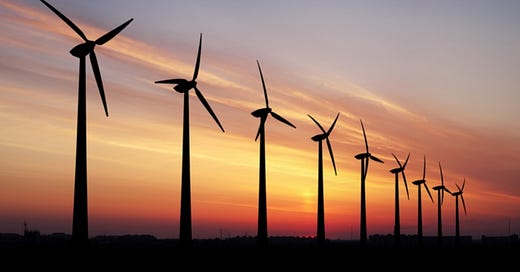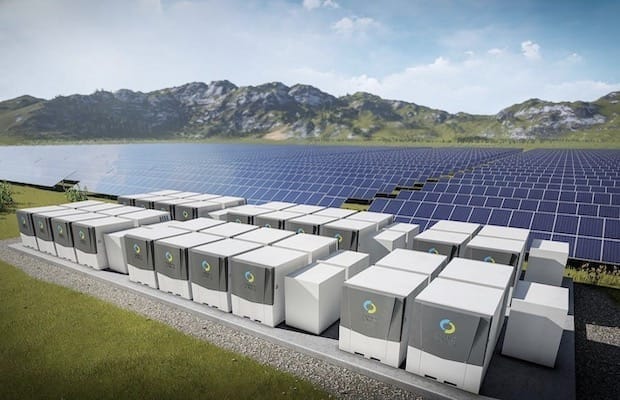The subject of renewable energy is a controversial subject. I have been very vocal in my opposition to the push to have it take over as the primary or only source of electric energy in the USA. However, I am also an open-minded fellow, I don’t have anything personally against wind and solar. It’s based on my expertise in power system operations that I just don’t see that it’s technically possible to achieve that goal, regardless of the cost. The realities of oversaturation of these types of renewables are showing up in several Interconnections and Balancing Authorities around the world. This has been well documented including the financial impact, so I won’t beat that dead horse.
It is safe to say that the all wind/solar interconnection is a pipe dream that will never see fruition. Sure, there will be micro-grids made up of net-zero advocates that will work. Controlling the type of loads will be as important as the power source. A healthy amount of demand response would be a necessity for long term success. But those types of micro-grids are not a practical solution to our modern power system, they’re very expensive, and frankly, just won’t work at scale.
Does this mean we just rip out all of the solar and wind, toss them in the trash? Many here on Substack would say yes, but I do not agree with that if the renewable energy industry would clean up its act. The subsidies do need to end, and the rhetoric about oils subsidies must stop, the power industry is not the oil industry. With continued subsidies, renewables will continue to be viewed as generation on welfare, with an unfair artificial advantage in the industry.
The question is “How do you make wind and solar work with a power system based on dispatchable power?”. Here are some key points
Intermittent power sources connected directly to and as a source for the Interconnection are just trouble and will never really work. Probably the best solution is a battery bank at each solar and wind generation facility. For solar, the batteries would be sized to absorb the output of the solar farm over the active period when the batteries are fully discharged, and have an output capacity at least equal to the solar farm capacity. This arrangement will deliver firm energy to the power system without concern over variations in solar output. If needed, the batteries can follow AGC dispatch commands, and grid forming inverters do have frequency response like governor droop. The batteries would exist only as firming energy for the solar/wind farm (e.g. no discharging batteries for sale and selling power off the renewable generation at the same time). This ensures there are no surprises, firm energy is indeed firm, and puts the cost of firming the solar/wind energy squarely where it belongs, on the plant owner. Wind energy would use batteries in a very similar manner, the battery dispatch would depend on changes in wind and thus would be less predictable. So the moral here is the renewable facility needs to be designed to charge the batteries, and the batteries are designed to provide X capacity for X hours. It should never be the intention to feed power to the interconnection directly from the renewable plant unless the batteries are fully charged and can take over when the renewable fuel fails.
Because solar and wind do not provide voltage support and lack inertia, each installation should also contain a synchronous condenser with flywheel. The synchronous condenser would provide the local voltage control lost from the inverter-based power sources and would eliminate that responsibility from the grid forming inverter on the batteries. A Stacom or a static var compensator would work, but there is no opportunity for inertia. Adding the flywheel to the synchronous condenser adds the needed inertia to reduce frequency decline until the grid forming inverter logic can calculate and respond. By making the synchronous condenser part of the renewable installation, it again puts the cost where it belongs. It also increases the number of synchronous condensers in service.
Employing these technologies in wind and solar would move them out of the “trash generation” arena and move them more to the mainstream where they would be an acceptable resource in the mix. There is no question this would inflate the cost of renewable installations, and without subsidies they might struggle to find their niche. There are a host of issues faced by this type of generation, not the least of which is land use. What is clear is the “bull in the china shop” approach of the past will likely no longer work going forward.







"There is no question this would inflate the cost of renewable installations, and without subsidies they might struggle to find their niche. "
That quote qualifies you as a "Master of Understatement". ;-)
This is exactly what is needed. Put the burden and the cost of reliable power, voltage and frequency on the generation source - at that sources physical location! BEFORE it touches the grid. Otherwise everyone else pays by having to install equipment behind the meter to protect their own machines and devices from micro-interruptions, or major interruptions.